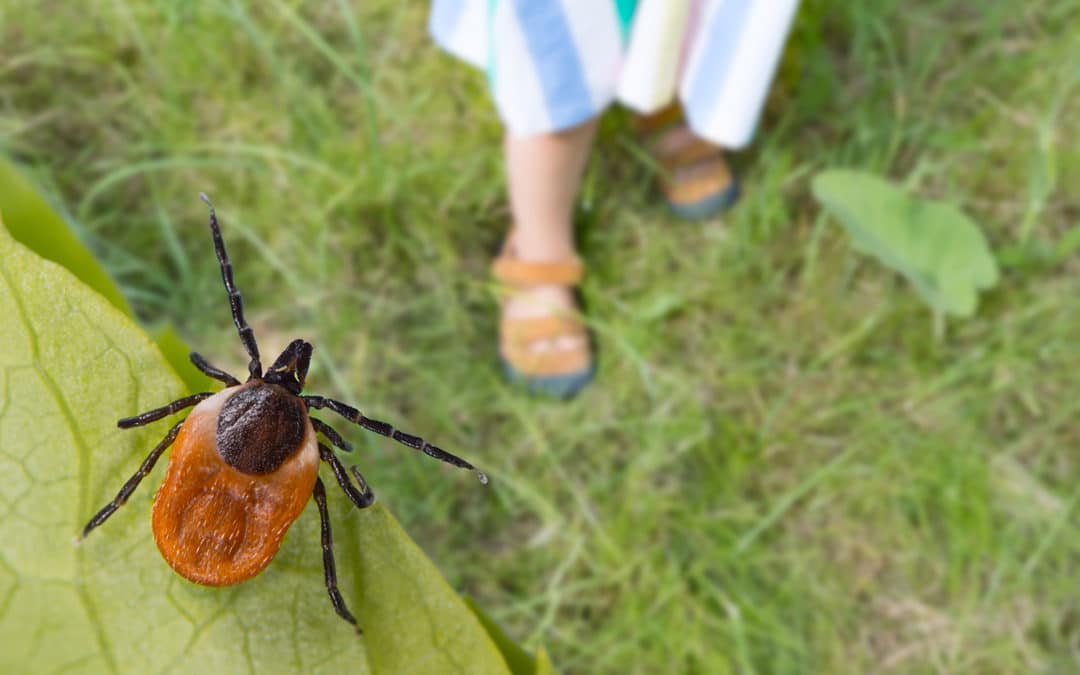No matter who you are, if you regularly spend time outdoors and live in the Midwest, then you or someone you know has been bitten by a tick. Today, ticks are an infamous component of the outdoors. It seems that year, after year, the number of ticks increases and with that increase, the rate of Lyme disease does as well.
Lyme disease is a tick-borne illness that can be life-altering. It causes neurological problems in many people that are irreversible if left untreated for too long. Treatment of Lyme requires prolonged exposure to antibiotics that can leave you feeling wonky for months as well. To put it simply, Lyme disease is best to be avoided. While many of us stay out of the tall grass for precisely this reason, you might be surprised to find that that might not be enough.
Ticks Aren’t Only for Hikers
Most avid hikers know to be vigilant regarding ticks. You know the drill; shower after a hike, check your body for ticks and apply a strong insect repellant beforehand. You might be surprised to know that the average tick doesn’t care if you’re hiking or playing in your backyard.
The truth is, a tick doesn’t need more than 4-4.5-inch grass to be happy. What a tick is looking for in this longer grass is shade from the sun. Therefore, the shaggier your yard, the higher the chance that it’s hiding ticks. Worse yet, if you’re mowing, weed eating, or doing other landscaping, you’re often accessing less-manicured areas of your yard that can be housing ticks.
Just as they say a shark doesn’t need much more than a few feet of water, a tick doesn’t necessarily need long grass, either. To put it simply, anyone’s yard can harbor ticks.
Iowa Ticks Carry Lyme Disease
While Iowa isn’t considered a “high” Lyme disease state, the prevalence of Lyme disease has increased steadily over the years. Between 2010 and 2017 cases increased 4 times, according to the Iowa Department of Public Health.
Any variety of black-legged tick can carry Lyme disease, which is most commonly passed down through the blood of a common field mouse. Every stage of a tick’s lifecycle can carry Lyme disease as well, from the larvae, the nymph, and the adult. While adult ticks are large enough to spot, both nymphs and larvae are often too small to notice.
Lyme Isn’t All You Have to Worry About
Lyme disease isn’t the only thing you have to worry about. Anaplasmosis, babesiosis, rocky mounted spotted fever, and tularemia are just a few of the diseases that a tick can give you, all of which are serious if left untreated. A tick bite is no joke; it carries the chance of a prolonged, potentially life-altering illness.
We Can Help You with Your Tick Problem
As a pest control company, we’re more than capable of fixing your tick problem no matter how serious. We specialize in both proactive and reactive tick control. We understand the problem areas in your yard that could be harboring ticks and will work with you to neutralize them.
Furthermore, we can offer a two-pronged tick mitigation strategy that targets your mouse infestation, if relevant. Did you know that Lyme disease is almost entirely passed down to ticks through the blood of the field mice they commonly feed on? If you control the mouse population you can reduce the prevalence of Lyme and other bloodborne pathogens in the existing tick population.






